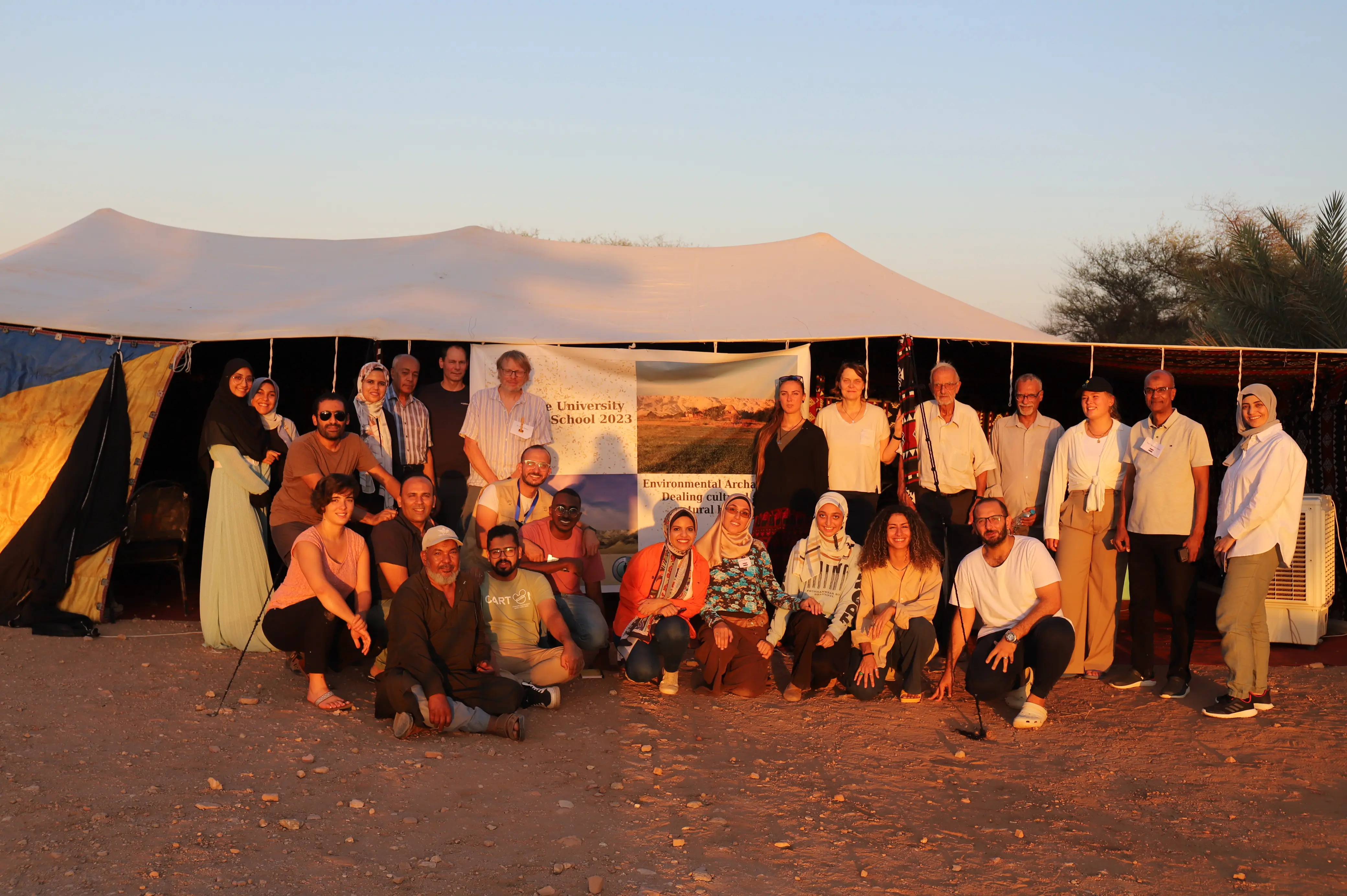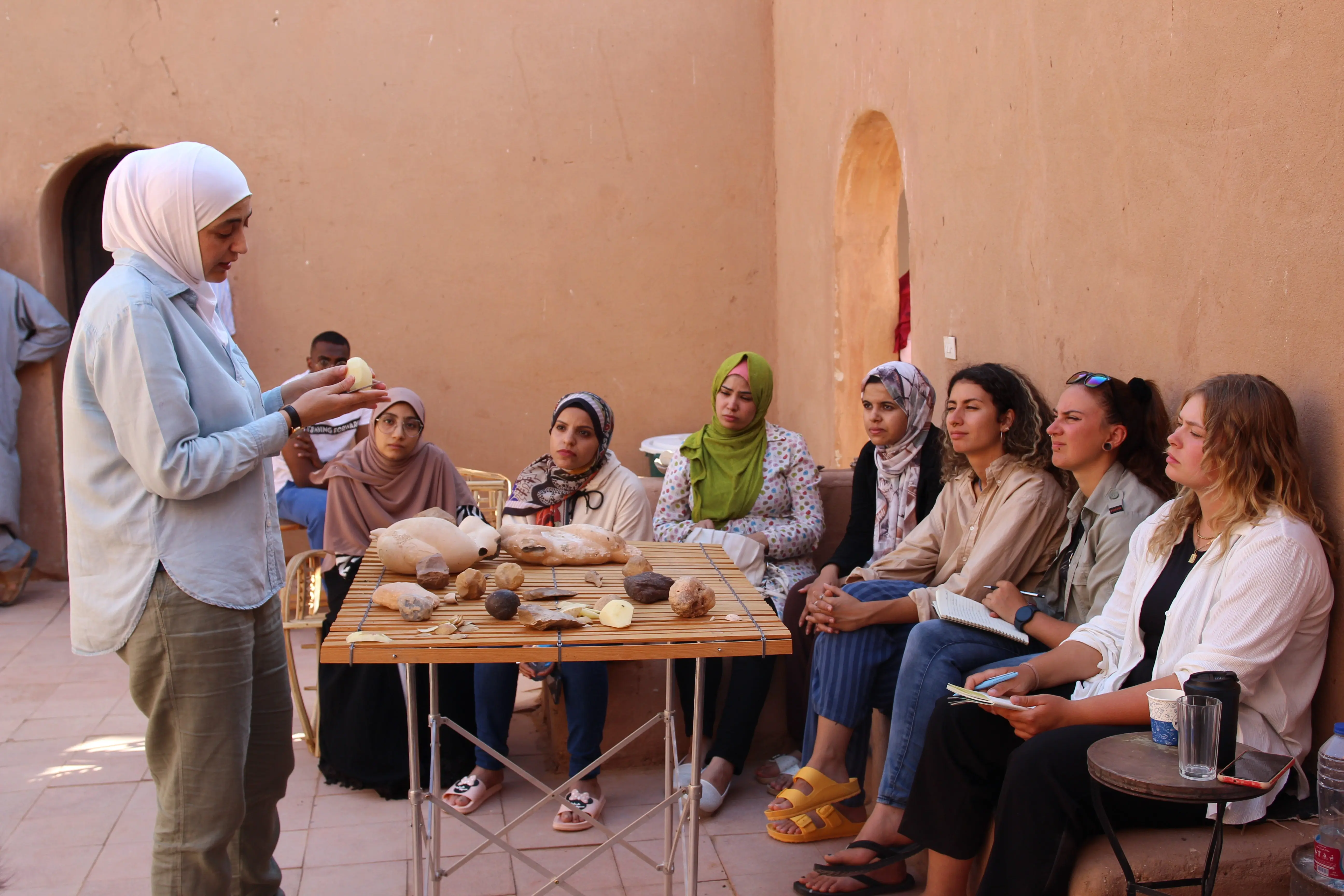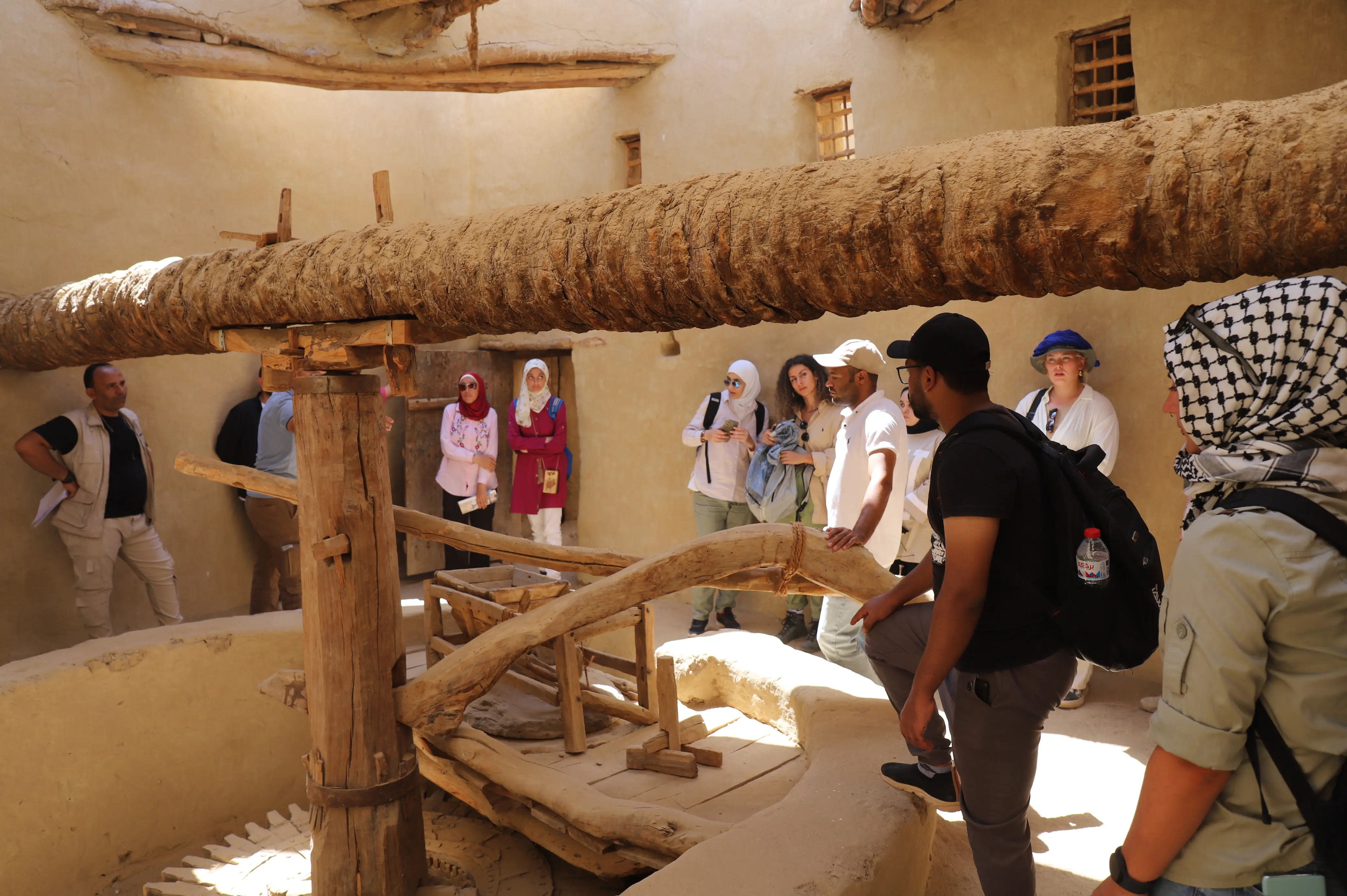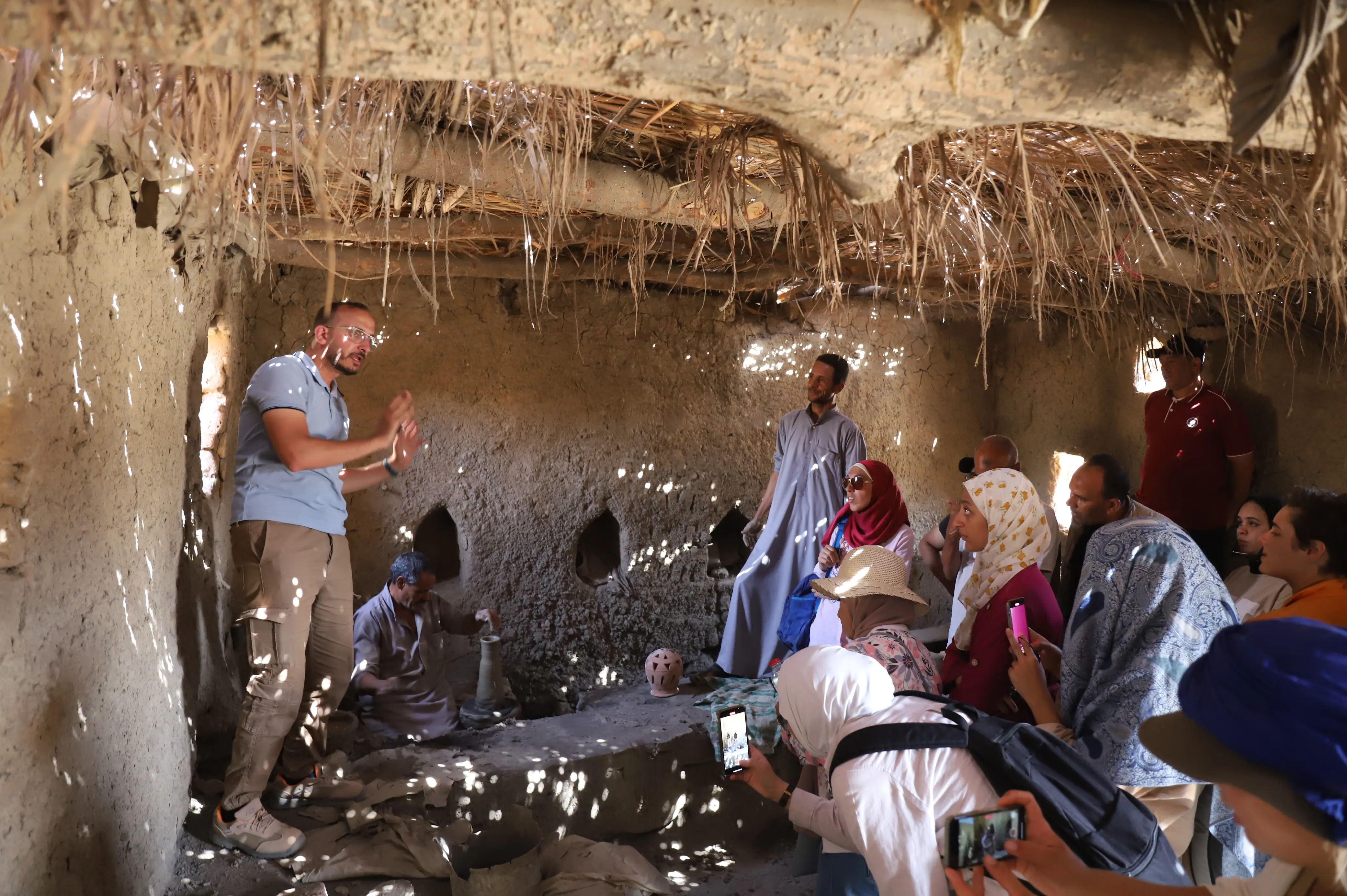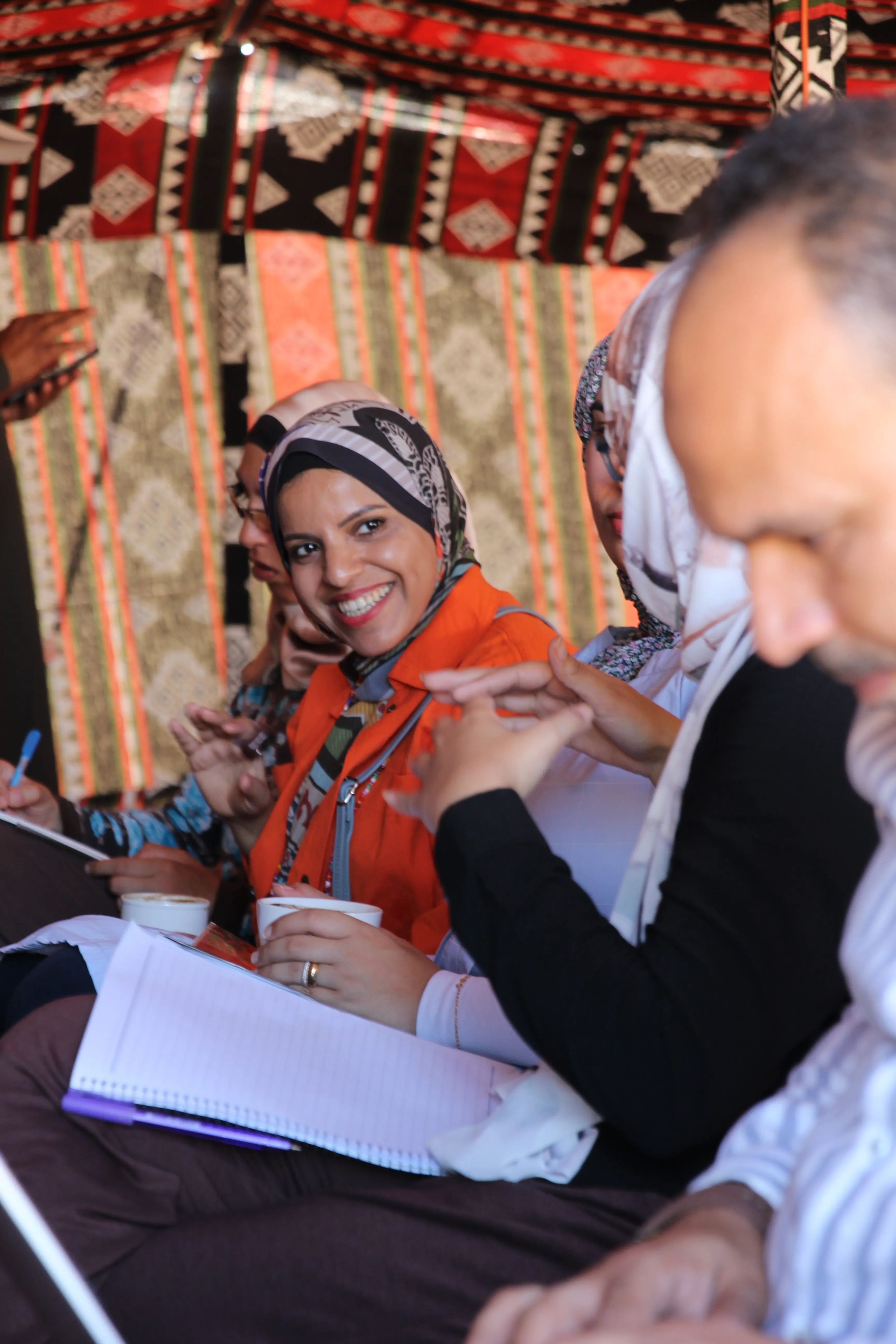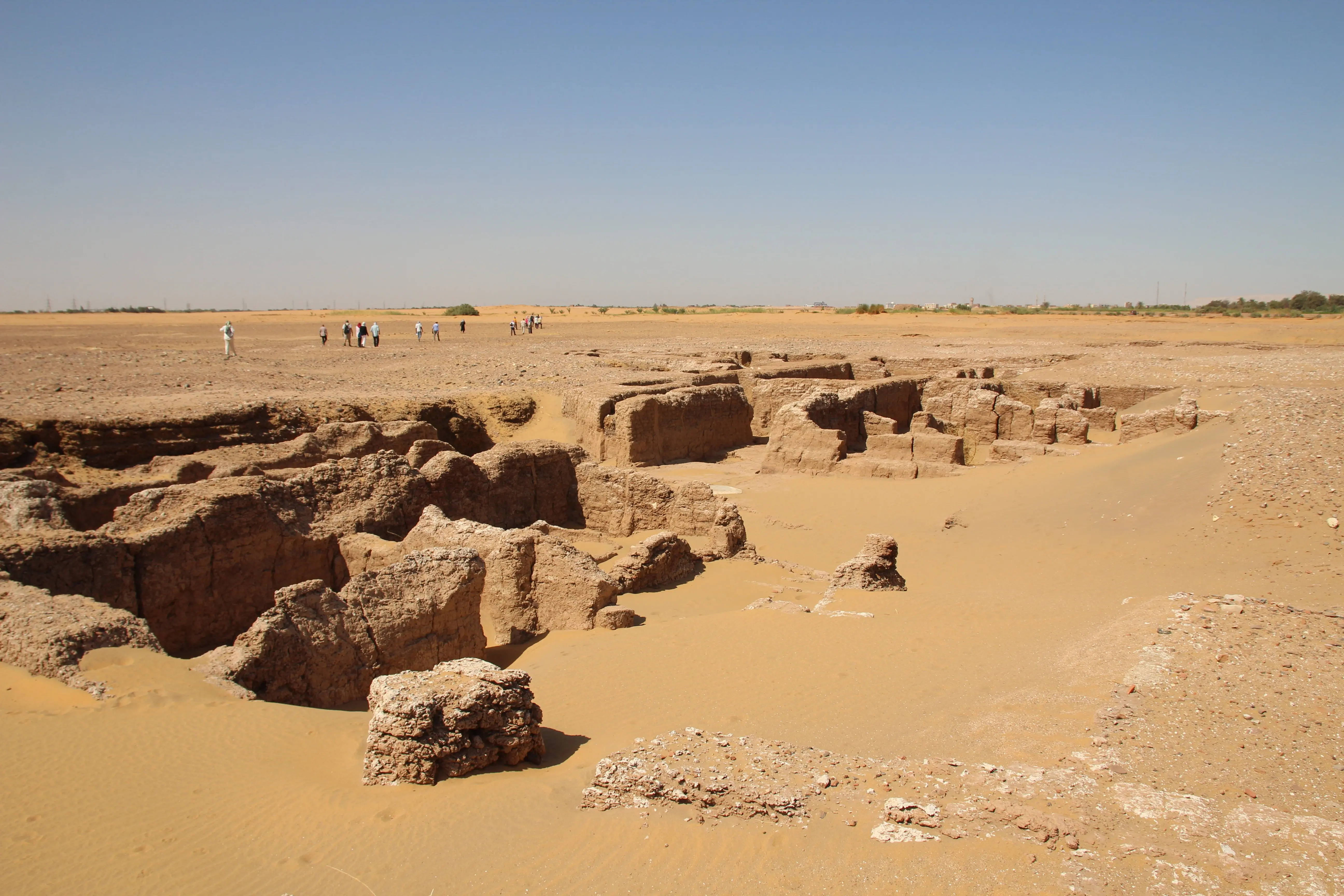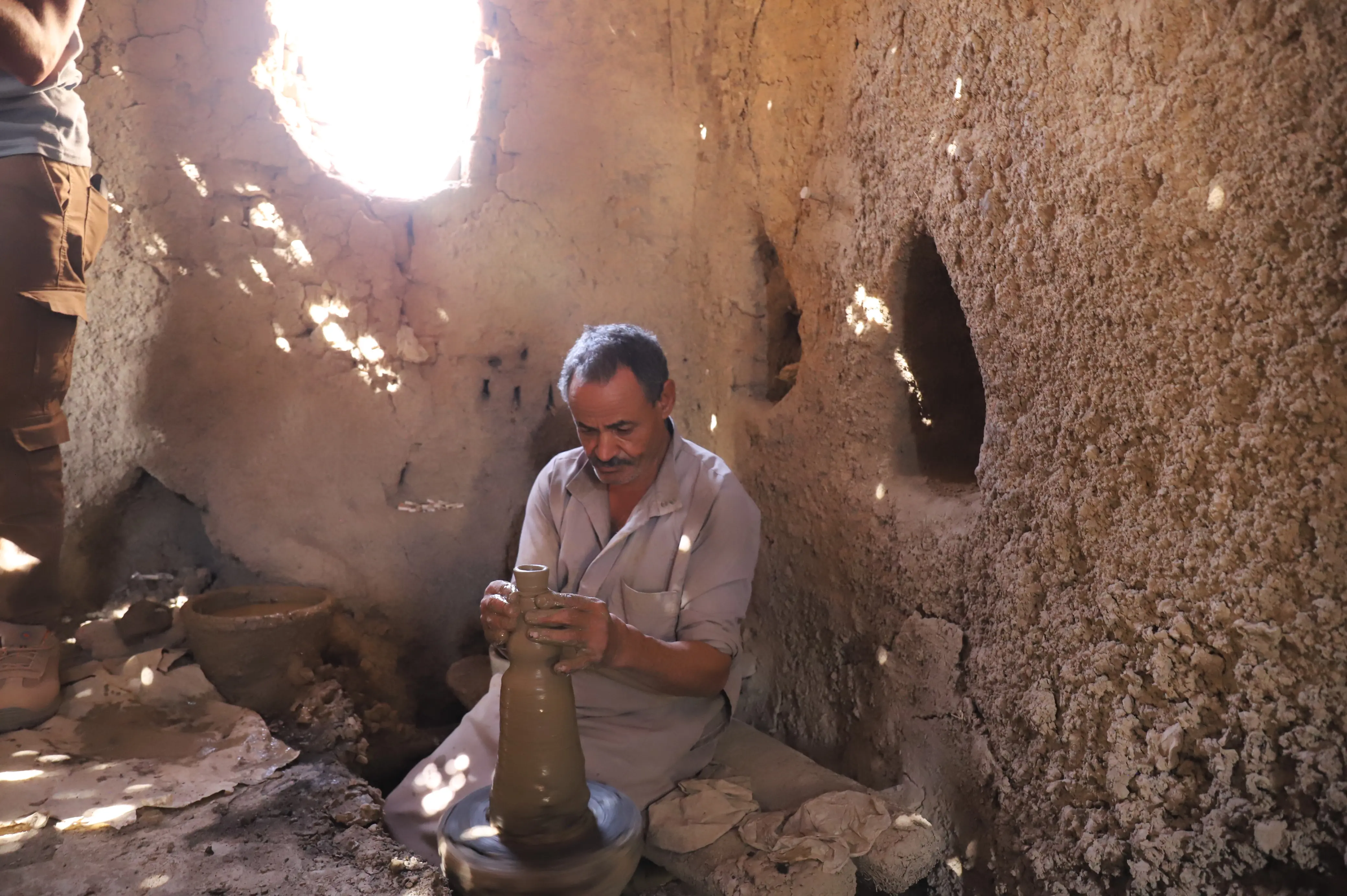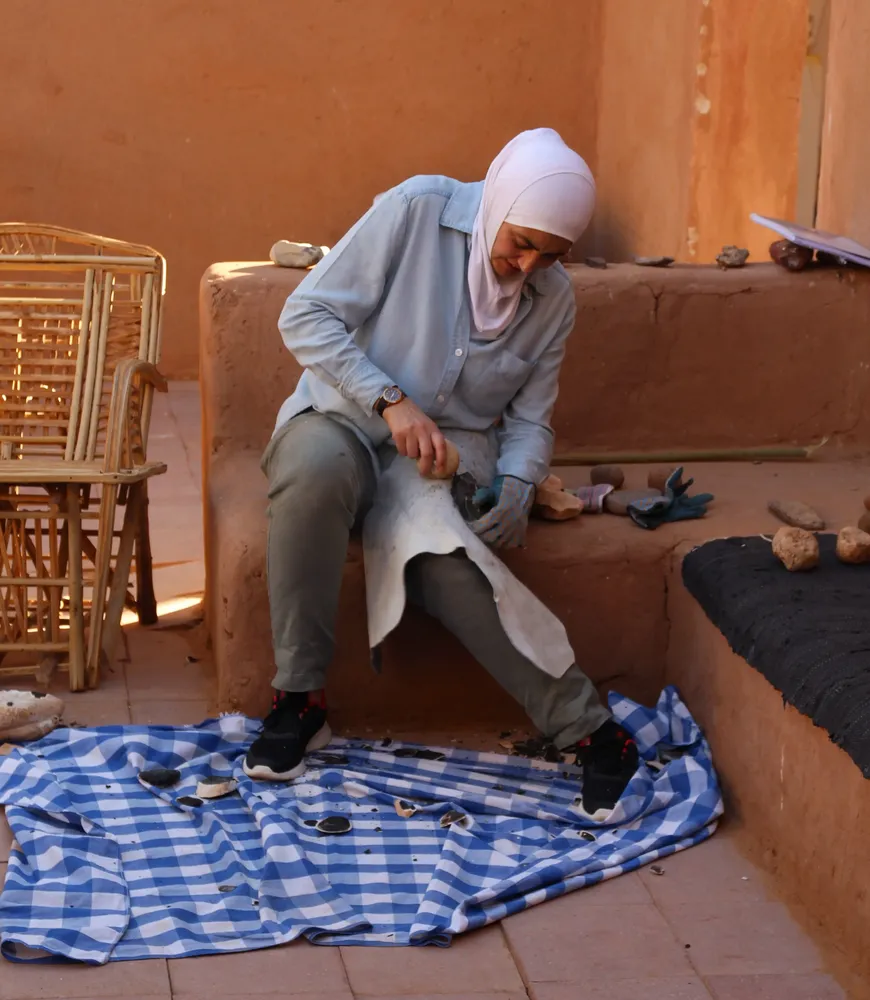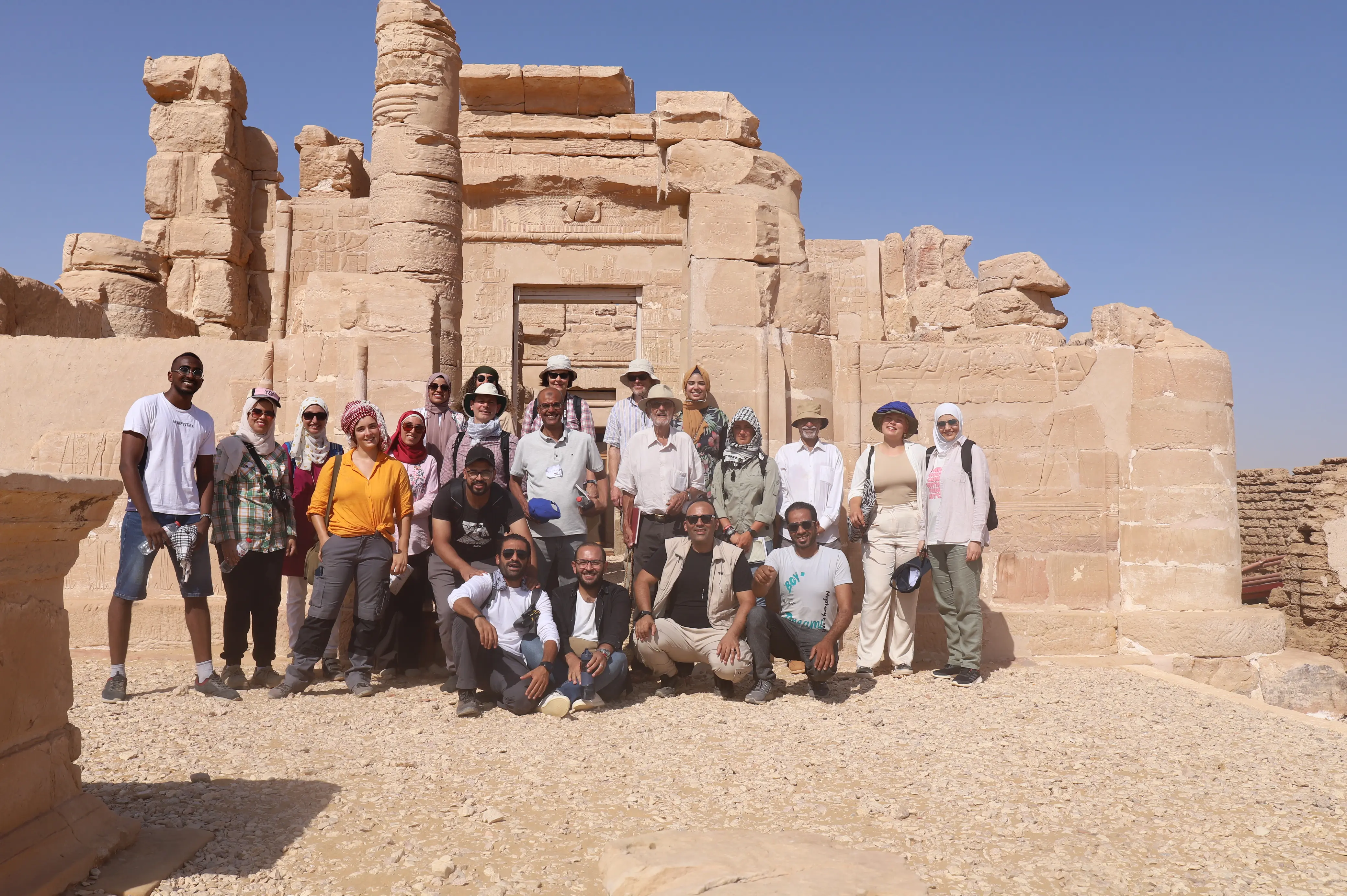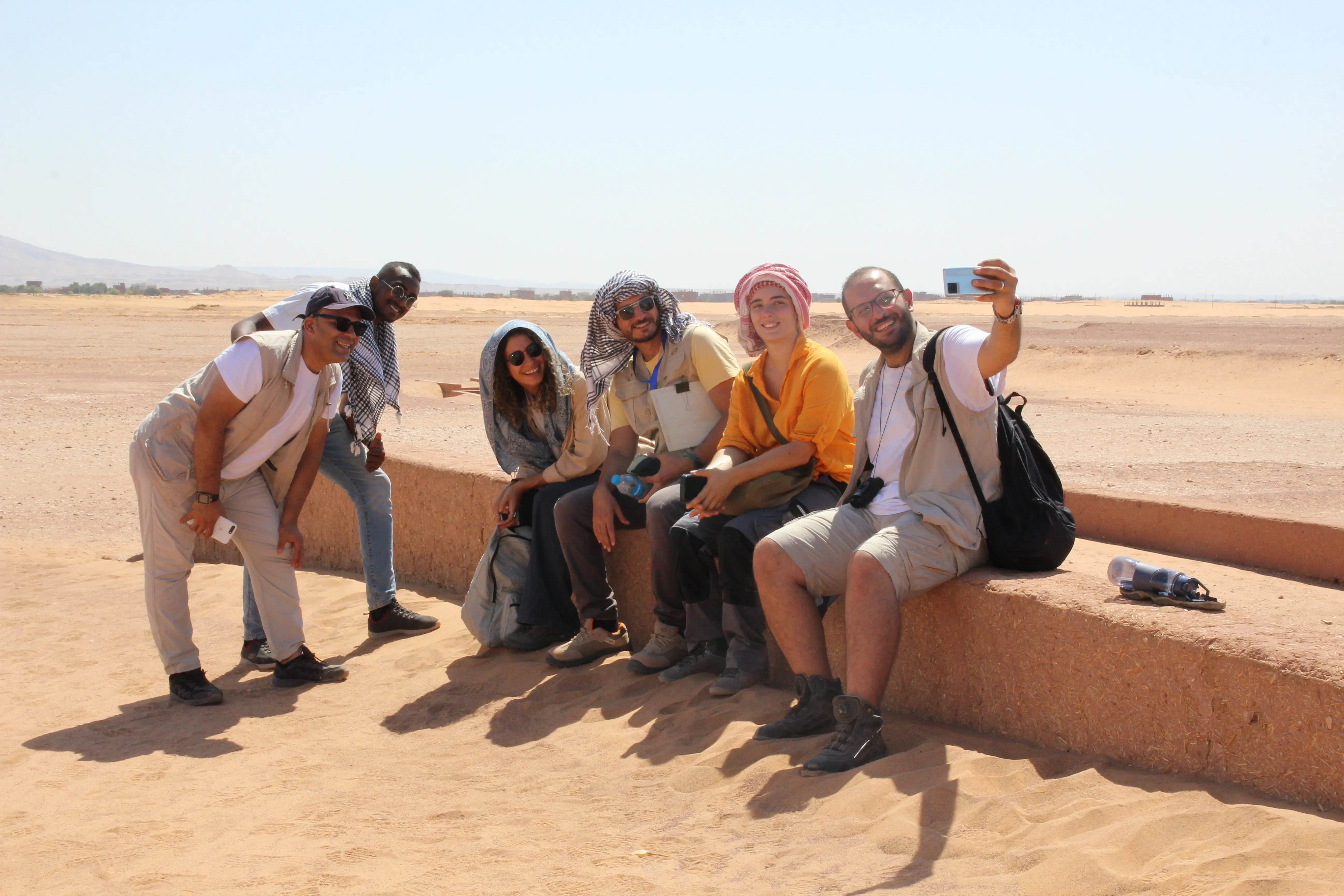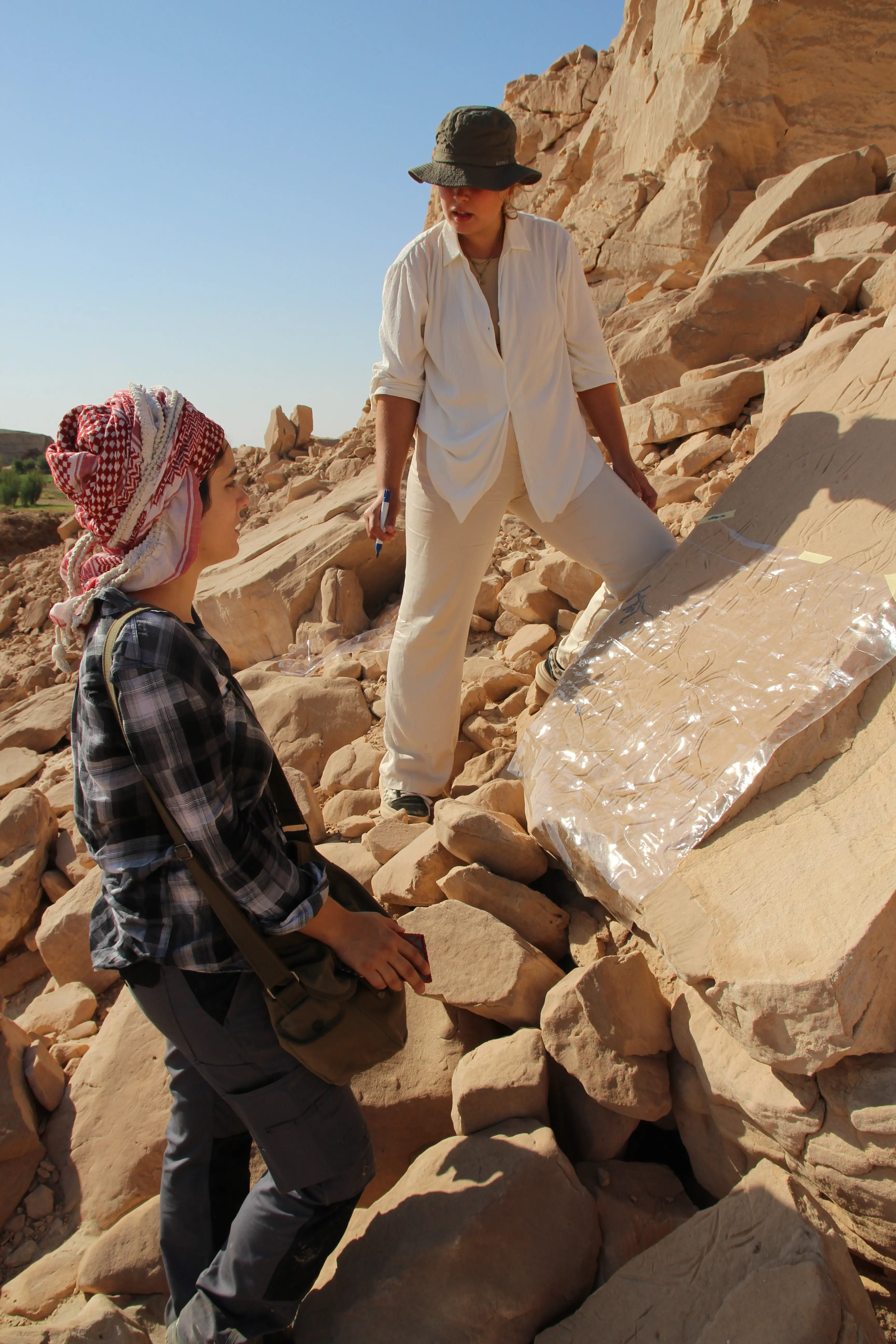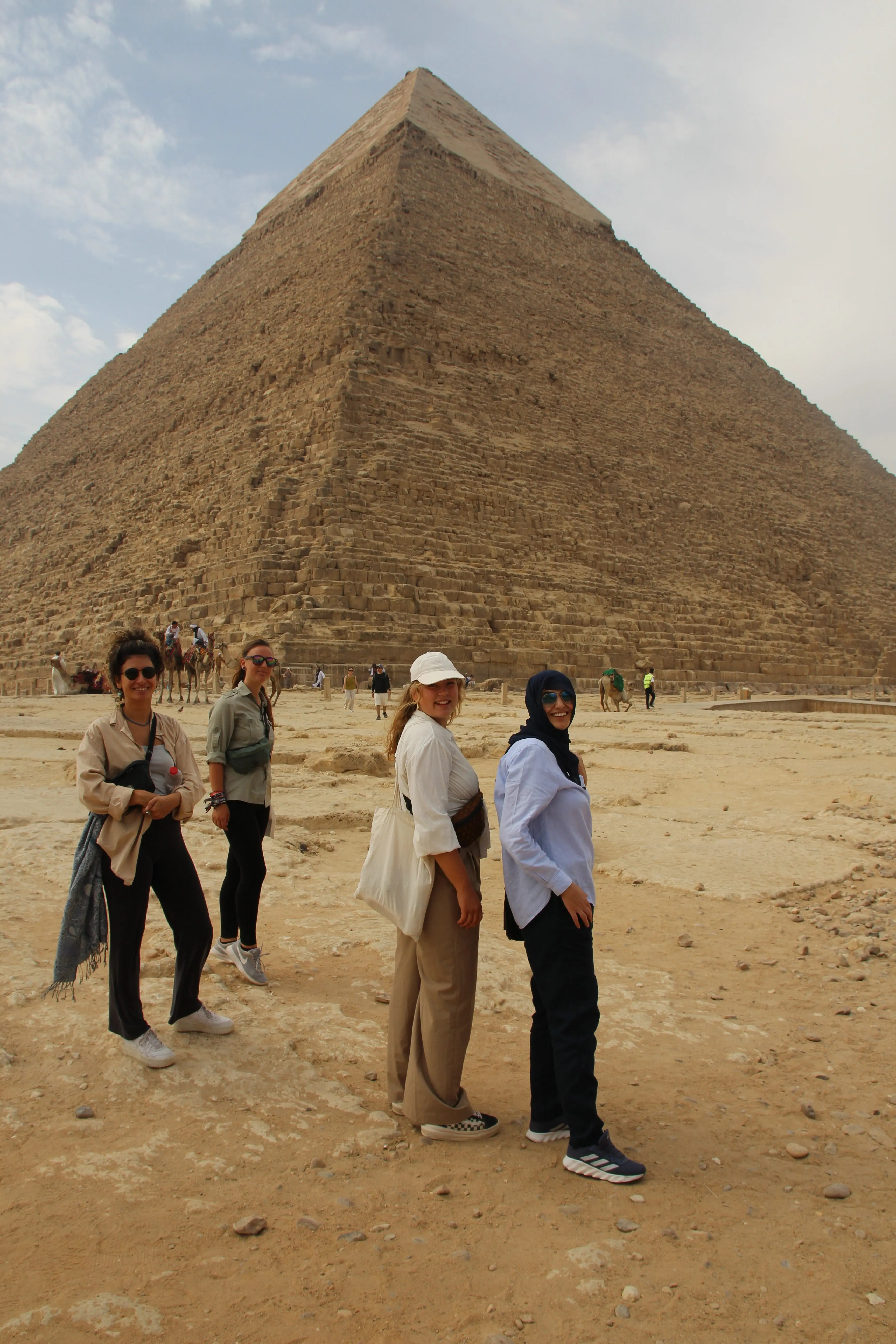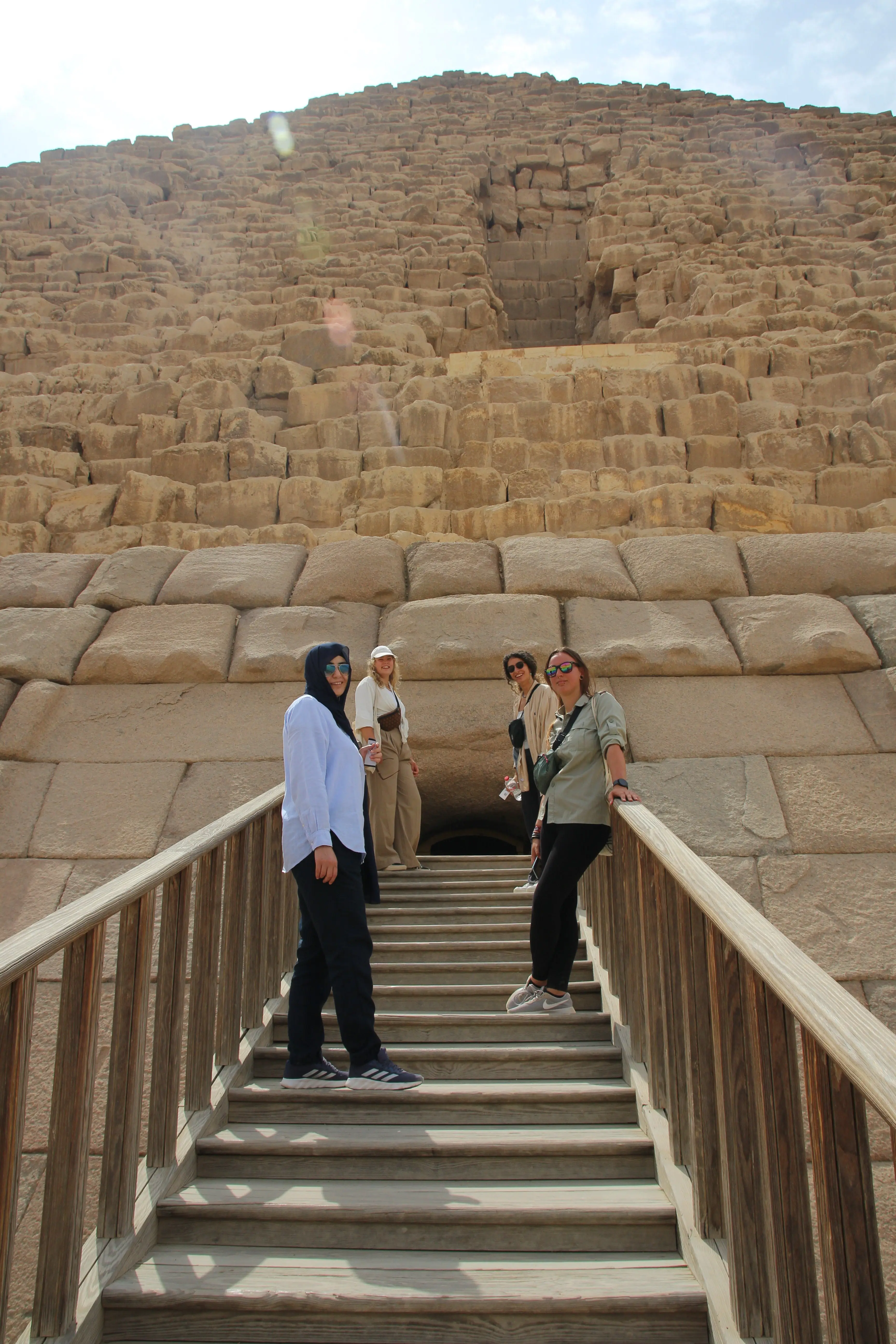Summerschool Ägypten 2023
Dakhla Oasis (Egypt), 22.09. – 01.10.2023
Karin Kindermann
The interdisciplinary Cologne Summer School “Environmental Archaeology: dealing cultural and natural heritage” took place from 22 September to 1 October 2023 in the Dakhla Oasis (Egypt) and brought together 6 Egyptian and 3 German students as well as various scientists from the fields of Prehistoric Archaeology, Egyptology, and Geosciences from the Cairo University (with participation of the American University in Cairo and the Institut français d’archéologie orientale - IFAO Cairo) and the University of Cologne. The aim was to impart and practice knowledge on heritage management – and here not only on cultural but also explicitly on nature conservation – in a fruitful mixture and intensive interdisciplinary dialogue of methods and approaches from the humanities and natural sciences.
The focus was on practical teaching units on site in the oasis and its immediate surroundings (including the documentation of rock paintings and the production of stone artefacts), as well as on the teaching of interdisciplinary topics, but above all on the joint and collaborative learning of German and Egyptian students on topics of practical cultural and nature conservation in the arid regions of Northeast Africa. Short excursions to important archaeological and cultural heritage sites, such as the temple of Deir el Hagar or the old oasis town of El Qasr with its characteristic mud-brick architecture, as well as visits to workshops, such as a ceramics workshop that is still in use today, completed the learning units. In addition, the CSS has strengthened the educational relations that have existed for several years between the universities/institutions in Cairo and the University of Cologne (e.g., Master program Environmental Archaeology, DAAD) by once again enabling direct dialogue and exchange, which had only been possible digitally in recent years due to the Covid pandemic.
Highlights
The interdisciplinary nature of this CSS, with its focus on human-environment relationships, raised awareness of the current global challenges of environmental, climate, nature and cultural conservation and preservation. By focusing on the close links between climate, landscape and cultural development, the international students of this CSS should have gained a new insight into the diverse and complex landscape and environment that surrounds them and the responsibility to preserve it for the future. The Heinrich Barth Institute’s excavation house in the Dakhla Oasis (Egypt) offered excellent conditions for this, as it is located on the edge of the desert and provides direct access to the endangered natural landscape with its prehistoric archaeological sites and rock art sites.
Certainly the visits to some of the cultural sites in the Dakhla Oasis, such as the pharaonic monuments and archaeological excavations of Ayn Asil and Deir el-Hagar, but also the medieval oasis village of El Qasr, whose mud-brick architecture is increasingly falling into disrepair, can be seen as highlights of our CSS. These visits to cultural sites gave the students the opportunity to understand
and discuss the problems of cultural preservation and its development for sustainable tourism. As one participating student put it, that “[…] the subsequent days then however featured a well-balanced mix of theoretical lectures, practical workshops, and excursions. This combination allowed us to witness the practical application of theoretical knowledge in the field, fostering a more comprehensive understanding.”
The participating students highlighted the practical teaching units, for example on prehistoric rock art by Dr. A. Brémont-Bellini (IFAO Cairo) or on knapping of stone artefacts by Dr. A. el Kassem (University of Cologne), as being particularly interesting and informative. The students were able to gain a first-hand insight into the documentation and interpretation of the rock art on site (Tineida/Dakhla Oasis). Various documentation techniques, both analogue and digital, were tried out in small groups and the relationship of the images to the surrounding landscape was discussed and categorised. A practical introduction to various GIS methods (W. Youssef, SCA/GIS Dept.) complemented the previous learning. By experimentally knapping of stone artefacts, the participating students were given a very vivid understanding of the technological aspects of stone artefacts and their significance for archaeology.
Just as important as the scientific program, and in some ways also a highlight, was the everyday, informal cultural exchange between the Egyptian and German students, who got to know and understand each other better. There were plenty of opportunities for this during the small workshops and the social program, during the welcome and farewell dinner and at the evening get-together in the excavation house, which contributed to a better understanding of each other.
Karin Kindermann
Testimonials
„Participation in the Summer School enabled me to gain a fundamental understanding of the complex interactive network of natural and anthropogenic factors in the preservation of cultural and natural heritage. It therefore was very impressive to see the codependency of understanding the geological as well as archaeological background of the desert region to fully assess the impacts on preservation methods and techniques. Especially regarding my interest in research, which lies in prehistoric and predynastic archaeology, the Summer School enabled me to gain insights into various perspectives on the interaction between humans and the environment. [..] However, the most imprinting experience during the CSS was being in an active discourse with the participants, whom all came from different backgrounds of scientific research, which created a very diverse platform for sharing knowledge and ideas.“
Lara Van der Schüür, Universität zu Köln
„The interdisciplinary approach of the summer school, bringing together highly skilled experts from various research backgrounds, significantly enriched our learning experience. The interconnectedness of the experts through the common theme facilitated diverse perspectives and fruitful discussions. The willingness of the lecturers to engage with students and address inquiries added a lot of depth to my overall learning experience. […] I particularly enjoyed the excursions to the rock art sites in Tineida and the exploration of the old mudbrick city of al-Qasr. These excursions not only showcased the practical aspects of archaeological work, but also provided insights into heritage site risk assessments and conservation methods.“
Lara M. Roth, Universität zu Köln
Further reading
Kindermann, K., & Bussmann, R. 2025. Environmental Archaeology and Heritage in Dakhla Oasis, Egypt. Heritage, 8(1), 15. DOI: 10.3390/heritage8010015

